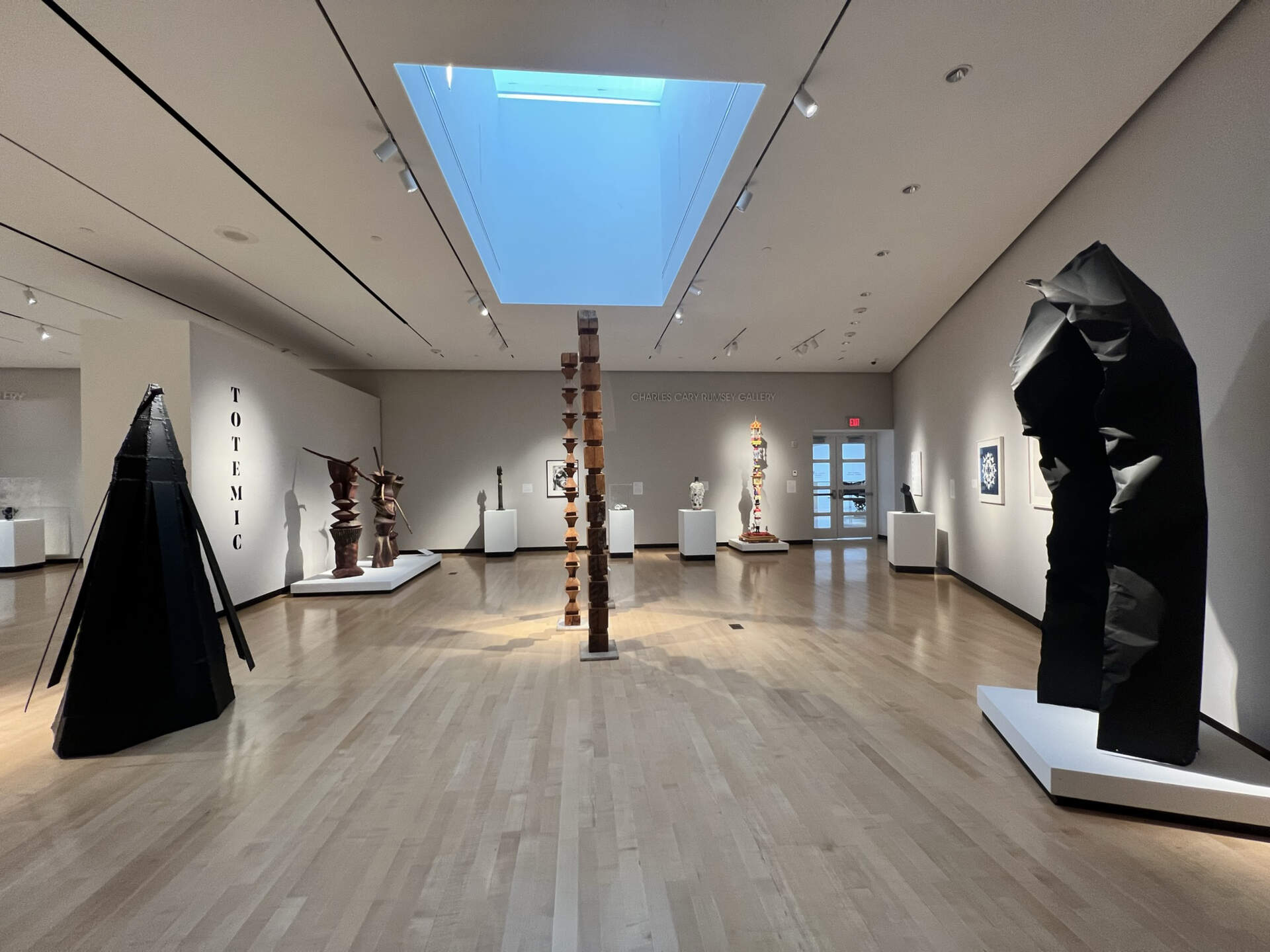
Totemic
Past
Feb 11, 2022 - Feb 19, 2023
The word totem has its roots in “ote” in Ojibwa, an indigenous Algonquin language from regions around Lake Superior. When 18th-century English speaking people heard the possessive word “ototeman” they perceived it as meaning “his totem”—which evolved into our word totem.[i] It has been defined as “a natural object or animal that is believed by a particular society to have spiritual significance and that is adopted by it as an emblem” and “a person or thing regarded as being symbolic or representative of a particular quality or concept.”[ii] Totemism has been understood as a means of connecting the material and spiritual world; together, they express the relationship between nature and society.”[iii]
Several works in the Center’s collection represent the totemic in different symbolic ways. Some literally illustrate the concept, like the new acquisition, Totem Pole (circa 1993) by Alan Van Every, which clearly derived inspiration from traditional indigenous art. The surfaces of this tall, carved wooden sculpture are covered with brightly colored patterns and imbedded with words or latent messages. His improvisational painting follows the biomorphic forms that reference Native American animal and figurative totem poles, as well as other cultures’ obelisks and towering vertical sculptures.
Other artists have embraced organic and geometric abstraction to manifest their ideas. For example, Gene Vass, whose resonating repetitive forms in Three Untitled Sculptures (c. 1977)—reminiscent of Brâncuși’s early 20th-century totemic abstractions—suggest an infinite continuity to the cosmos, subverting corporeal references for celestial. Nancy Valle’s trio, Unearthing (2002), comprised of terra cotta, glaze, and painted wood, suggests more figurative references through her volumetric forms.
There are works that represent human sexuality, fecundity, and spiritual aspirations. Ken Payne’s Siekem (1986) is an unabashed visualization of phallic power referencing ancient Egyptian mythology. Jill Gussow’s manipulated photograph about pregnancy refers both to the origins of life and universal fears of the unknown. Jody Hanson’s mandalas White (2013), comprised of salt crystals on paper, and Cyanotype Mandala (2015) epitomize achievable serenity in their minimalism.
Powerful sculpture need not be large to signify compelling messages. Jack Solomon’s Black Power is a bronze interpretation of the two-dimensional raised fist design symbolizing black power during the 1960s. The activist Civil Rights and Black Power movements sought the goal of achieving social, economic, and political equality in America. Seneca artist Richard Nephew’s diminutive sculpture, The Birth of Good and Evil (1988) made of Iroquois alabaster also tackles an immense concept. He states that he “deals with a broad spectrum of concerns that are both traditional and modern” through the Haudenosaunee story of “Good” being born naturally, while “Evil” emerges aberrantly from the side of the same birth mother.
Other artists in the exhibition include Rosemarie Castoro, Wilhelmina Godfrey, Ron Meyers, and George Smith. Their wide range of totemic works is presented to complement the shamans and other totemic sculpture by Bill Stewart on view in the adjacent Sylvia L. Rosen Gallery.